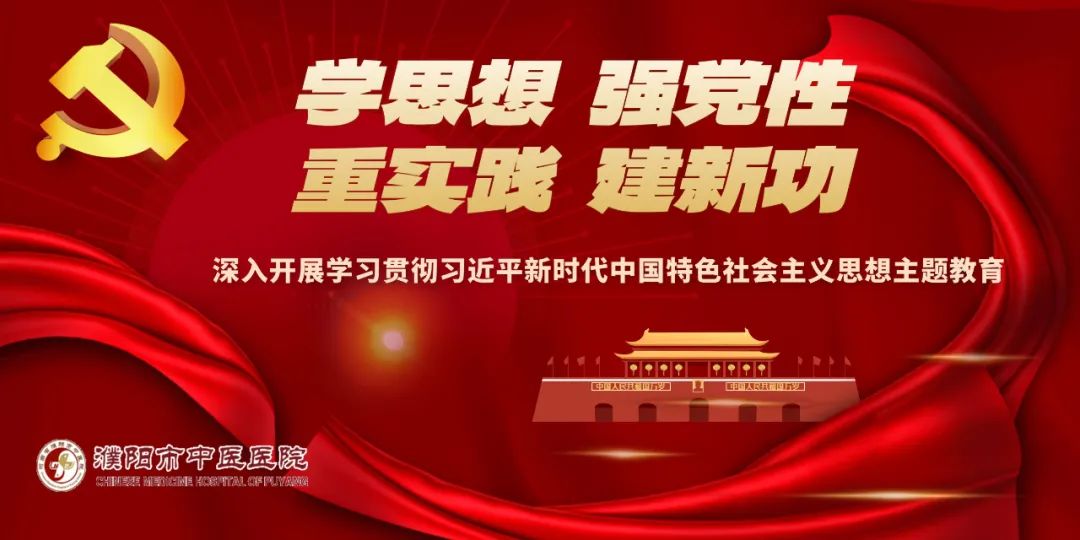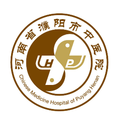

The Winter Solstice is the shortest day and longest night of the year, marking the turning point where Yin reaches its peak and Yang begins to emerge. Health preservation during the Winter Solstice not only emphasizes the concept of “storing” in winter and nurturing Yin but also stresses the importance of achieving a balance between Yin and Yang.
Dietary Health
Winter is a peak season for “internal heat”. Consuming excessive Yang foods can accumulate in the digestive tract, potentially leading to a condition known as “food heat”. Irregular sleep patterns, especially staying up late from 11 PM to 1 AM, can cause the Yang energy in the body to remain overly active, resulting in symptoms of internal heat in the organs, referred to as “emotional heat”. At this time, drinking barley tea or he huan hua (Mimosa flower tea) can help alleviate dietary heat and promote emotional well-being.
When the body is not experiencing “internal heat”, it is advisable to consume moderate amounts of warming foods to nourish the liver and kidneys, such as walnuts, peanuts, and chestnuts. It is important to limit the intake of cold and raw foods and avoid overly greasy meals. Due to the dryness of indoor air in winter, many people may experience chapped lips; thus, increasing water intake is beneficial. Additionally, incorporating ingredients that moisten the lungs, such as adding bai he (lily bulb), shan yao (Chinese yam), and lian zi (lotus seed) to porridge, can help nourish Yin and support lung health.
Herbal Health
As the saying goes, “Supplement in winter, and you can conquer the tiger in spring”. According to TCM theory, winter is a season of storage, during which the body’s essence and Qi are preserved and not released, allowing nutrients to be fully absorbed, utilized, and stored, thereby maximizing the potential for improving health and preventing diseases.
From a modern medical perspective, the gastrointestinal absorption capacity is stronger in winter, and the metabolic rate slows down, allowing more nutrients to be converted into bodily substances.
Gao fang (tonic pastes) are tailored to individual needs, used for nourishment and the management of chronic diseases, particularly suitable for individuals with stable chronic conditions, post-illness weakness, or those with insufficient Qi and blood, as well as those in sub-health states. Elderly patients often suffer from multiple concurrent diseases; thus, using gao fang can address various health issues comprehensively, promoting overall health and longevity.
Daily Living Health
In winter, it is essential to prevent cold and maintain warmth. Engaging in appropriate cold-resistance exercises, such as washing the face with cold water, can enhance the body’s adaptability to cold and improve cold tolerance. Regularly rubbing the hands to stimulate important acupoints such as Lao Gong (Pericardium 8), Yu Ji (Lung 10), and He Gu (Large Intestine 4) can promote the flow of Qi and blood, strengthening the body. The duration of hand rubbing can vary, but consistency is key.
Exercise Health
During the Winter Solstice, Yin energy is at its peak, and Yang energy begins to rise. The principle of “movement generates Yang, while stillness generates Yin” suggests that exercise should primarily consist of gentle aerobic activities, with moderate intensity to avoid excessive stimulation of Yang energy.
Emotional Health
As Yang energy begins to emerge during the Winter Solstice, it is important to protect this Yang energy and avoid extreme emotions that could disturb it.
Preventive Health
Preventing Wind and Cold: When cold enters the body, it first affects the lungs, impairing lung Qi and leading to symptoms such as colds, coughs, fever, pneumonia, and asthma. Therefore, individuals with weak constitutions should take precautions against the cold in winter and consume foods that tonify lung Qi to enhance their constitution. It is also important to ensure proper ventilation indoors to allow fresh air circulation, but this should be done during warmer, sunny weather, and one should avoid standing directly in front of the window to prevent exposure to cold winds.
Preventing Damage to the Heart, Lungs, and Kidneys: TCM holds that winter is the season of the kidneys, which serve as the body’s energy reservoir. When energy is insufficient in other areas, the kidneys will draw from their reserves to support them, often leaving the kidneys in a state of deficiency. For cardiovascular health, Dan Shen (Salvia miltiorrhiza) can help improve heart and coronary artery function, promoting overall vitality.
Source:Learning Power
(Disclaimer: The publication of this article by the WeChat account of the Puyang Traditional Chinese Medicine Hospital is intended to disseminate more information. If there are any errors in source attribution or infringement of your legal rights, please contact us promptly, and we will correct or delete it in a timely manner.)
Previous Issues Review
|
01 |Hospital News丨The Market Supervision Administration of Huolong District, Puyang City, visited our hospital to conduct a drug quality management inspection. |
|
02 |Health Science Popularization| Please accept this, mothers, an article to help you understand mastitis during breastfeeding! |
|
03 |Health Science Popularization|Teaching you how to care for “frozen shoulder” |
Puyang Traditional Chinese Medicine Hospital Consultation Phone: 0393-4416620 0393-8758001Emergency Phone: 0393-8758056Puyang Traditional Chinese Medicine Hospital North Campus, Puyang Comprehensive Elderly Care Service CenterConsultation Phone: 0393-8679311
Puyang Traditional Chinese Medicine Hospital (North Campus)
Location:
West side of Puyang Senior Technical School, Wuyi Middle Road, Huolong District, Puyang City, Henan Province
Puyang Traditional Chinese Medicine Hospital (North Campus)
Location:
West side of Puyang Senior Technical School, Wuyi Middle Road, Huolong District, Puyang City, Henan Province
Puyang Traditional Chinese Medicine Hospital (North Campus)
Location:
West side of Puyang Senior Technical School, Wuyi Middle Road, Huolong District, Puyang City, Henan Province
Puyang Traditional Chinese Medicine Hospital (North Campus)
Location:
West side of Puyang Senior Technical School, Wuyi Middle Road, Huolong District, Puyang City, Henan Province
Puyang Traditional Chinese Medicine Hospital (North Campus)
Location:
West side of Puyang Senior Technical School, Wuyi Middle Road, Huolong District, Puyang City, Henan Province
Puyang Traditional Chinese Medicine Hospital (North Campus)
Location:
West side of Puyang Senior Technical School, Wuyi Middle Road, Huolong District, Puyang City, Henan Province
Puyang Traditional Chinese Medicine Hospital (North Campus)
Location:
West side of Puyang Senior Technical School, Wuyi Middle Road, Huolong District, Puyang City, Henan Province
Puyang Traditional Chinese Medicine Hospital (North Campus)
Location:
West side of Puyang Senior Technical School, Wuyi Middle Road, Huolong District, Puyang City, Henan Province
Puyang Traditional Chinese Medicine Hospital (North Campus)
Location:
West side of Puyang Senior Technical School, Wuyi Middle Road, Huolong District, Puyang City, Henan Province
Puyang Traditional Chinese Medicine Hospital (North Campus)
Location:
West side of Puyang Senior Technical School, Wuyi Middle Road, Huolong District, Puyang City, Henan Province
Puyang Traditional Chinese Medicine Hospital (North Campus)
Location:
West side of Puyang Senior Technical School, Wuyi Middle Road, Huolong District, Puyang City, Henan Province
Puyang Traditional Chinese Medicine Hospital (North Campus)
Location:
West side of Puyang Senior Technical School, Wuyi Middle Road, Huolong District, Puyang City, Henan Province
Puyang Traditional Chinese Medicine Hospital (North Campus)
Location:
West side of Puyang Senior Technical School, Wuyi Middle Road, Huolong District, Puyang City, Henan Province
Puyang Traditional Chinese Medicine Hospital (North Campus)
Location:
West side of Puyang Senior Technical School, Wuyi Middle Road, Huolong District, Puyang City, Henan Province
Puyang Traditional Chinese Medicine Hospital (North Campus)
Location:
West side of Puyang Senior Technical School, Wuyi Middle Road, Huolong District, Puyang City, Henan Province
Puyang Traditional Chinese Medicine Hospital (North Campus)
Location:
West side of Puyang Senior Technical School, Wuyi Middle Road, Huolong District, Puyang City, Henan Province
Puyang Traditional Chinese Medicine Hospital (North Campus)
Location:
West side of Puyang Senior Technical School, Wuyi Middle Road, Huolong District, Puyang City, Henan Province
Puyang Traditional Chinese Medicine Hospital (North Campus)
Location:
West side of Puyang Senior Technical School, Wuyi Middle Road, Huolong District, Puyang City, Henan Province

